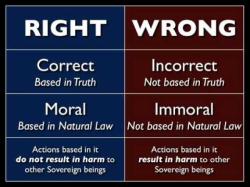What is a conditional proof?
A conditional proof is a method used in logic to establish the validity of a conditional statement (if-then statement) by making an assumption and deriving a conclusion based on that assumption. The goal is to show that if the assumption (antecedent) is true, then the conclusion (consequent) must also be true. If this is successfully demonstrated, it supports the overall validity of the conditional statement.
Here's a step-by-step explanation of how a conditional proof typically works:
Assumption:
- Begin by assuming the truth of the antecedent (the "if" part of the conditional statement). This assumption is made for the sake of argument and is not asserted as true in the broader context.
Logical Derivation:
- Use deductive reasoning and logical rules to derive a series of statements or propositions based on the assumption. Each step in the derivation should be justified by established rules of inference or axioms.
Arrive at the Conclusion:
- Continue the logical derivation until you reach the conclusion (the "then" part of the conditional statement). If the conclusion is successfully derived based on the assumption, it supports the validity of the conditional statement.
Discharge the Assumption:
- Conclude the proof by discharging the assumption. This involves explicitly stating that the conclusion was reached under the assumption made at the beginning of the proof.
The conditional proof is a powerful tool in logic because it allows one to demonstrate the validity of a conditional statement without having to consider all possible truth values for the individual propositions involved. Instead, it focuses on a specific scenario where the antecedent is assumed true and demonstrates that, under that assumption, the consequent must also be true.
Here's a simple example to illustrate a conditional proof:
Conditional Statement:If is true, then is true.
Conditional Proof:
- Assumption: Assume is true.
- Logical Derivation: Use deductive reasoning to derive statements.
- Arrive at the Conclusion: Conclude that is true based on the assumption.
- Discharge the Assumption: Conclude the proof by stating that if is true, then is also true.
It's important to note that the success of a conditional proof relies on the logical validity of the steps taken in the derivation. If a contradiction or inconsistency is reached, it indicates a flaw in the original assumption or the logical process.
What is the process and purpose behind a conditional proof in logic or mathematics?
A conditional proof, also known as a direct proof or a proof by implication, is a method of proving a conditional statement in logic or mathematics. The conditional statement, often denoted as P → Q, asserts that if P is true, then Q must also be true. The goal of a conditional proof is to establish this logical relationship between P and Q.
Process of a Conditional Proof:
Assume the antecedent (P): Begin by assuming that the antecedent, P, is true. This assumption is made within the context of the proof and is not meant to imply that P is always true outside of the proof.
Derive the consequent (Q): Using logical reasoning and established rules of inference, deduce the consequent, Q, from the assumed antecedent, P. This involves applying logical principles and established mathematical theorems to derive Q from P.
Discharge the assumption: Once Q has been derived, the assumption of P is discharged. This means that the proof has demonstrated that if P is true, then Q must also be true, regardless of whether P is actually true or not.
Purpose of a Conditional Proof:
Conditional proofs are essential tools in logic and mathematics for establishing the validity of conditional statements. They provide a structured and rigorous method for demonstrating that if a certain condition holds, then a specific consequence necessarily follows. This type of proof is widely used in various fields, including propositional logic, set theory, and real analysis.
How does one construct a conditional proof?
Constructing a conditional proof involves carefully following the process outlined above and adhering to the principles of logical reasoning. Here's a step-by-step approach to constructing a conditional proof:
Identify the conditional statement: Clearly define the conditional statement to be proven, usually in the form of P → Q.
Plan the proof: Before diving into the proof, consider the logical steps involved in deriving Q from P. Identify the intermediate steps and logical principles that will be used to establish the connection between P and Q.
Write the proof: Begin by explicitly stating the assumption of P. Then, proceed to derive Q from P using logical reasoning and established rules of inference. Each step should be clearly justified and supported by appropriate logical principles or mathematical theorems.
Discharge the assumption: Once Q has been derived, explicitly discharge the assumption of P. This marks the completion of the proof, indicating that the logical relationship between P and Q has been established.
What are the key principles involved in a conditional proof?
Several key principles govern the construction of conditional proofs:
Modus ponens: This fundamental rule of inference states that if we have P → Q and P is true, then we can conclude that Q is true. This rule is often used in conditional proofs to derive the consequent from the assumed antecedent.
Hypothetical syllogism: This rule allows us to chain together conditional statements. If we have P → Q and Q → R, then we can conclude that P → R. This rule is used in conditional proofs to extend the implications of the antecedent to further consequences.
Detachment: This rule states that if we have a conjunction (P ∧ Q) and we know that P is true, then we can conclude that Q is true. This rule is sometimes used in conditional proofs to establish intermediate steps in the derivation of the consequent.
Logical equivalence: Conditional proofs rely on the ability to recognize and utilize logically equivalent statements. Understanding when two statements are equivalent allows for flexible manipulation of the conditional statement without altering its meaning.
Mathematical theorems: In mathematical proofs, established theorems and mathematical principles play a crucial role in deriving the consequent from the antecedent. Conditional proofs often involve applying relevant mathematical concepts to demonstrate the logical connection between P and Q.
Adherence to these principles ensures that conditional proofs are constructed in a rigorous and logically sound manner, providing a reliable method for establishing the validity of conditional statements.












